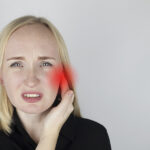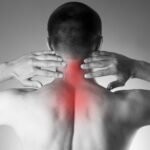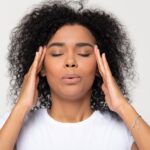New Hope for Athletes Who Struggle After a Sports-Related Concussion
Concussions caused by sports injuries are on the rise. High school and college athletes are experiencing more incidents that lead to concussions than in years past. However, there are better safeguards within sports programs that identify incidents that cause concussions better than had been done in the past. Sports like football, hockey, and soccer are sports that report the most frequent concussions and female athletes tend to experience concussions slightly more than their male counterparts.
A concussion has never been something to joke about, particularly in competitive sports. In the past, little was known about the long-term ramifications of a concussion, even worse, multiple concussions. Back then, it was a “bell ringer” or a “zinger” that you either were encouraged to “walk off.” When concussions started to be taken more seriously, young athletes were often advised to stay in a dark room and rest for days on end, with the presumption that the brain required uninterrupted time to heal free of stimuli. But as we’ll see, this was not the comprehensive treatment these patients needed. Receiving adequate care immediately following a concussion is critical and often that window was missed.
Table of Contents
How does a concussion occur in sports?
Almost 4 million concussions occur in sports settings every year in the US. Although a majority of concussions happen in heavy contact sports, like football and hockey, most any sport or recreational activity runs the risk of a concussion happening. A concussion is an injury to the brain that is caused when the head is shaken or experiences a significant force.
Usually, the brain is protected within the skull by the cerebrospinal fluid. However, when the head receives a blow or experiences rapid acceleration and deceleration (moving quickly and then rapidly stopping), the “floating” brain can impact the inside of the skull, leading to this sensitive organ experiencing an injury. Since the brain controls and affects the rest of the body, this type of head injury can cause far-sweeping symptoms, both short—and long-term.
This impact causes the nerve and blood vessels of the brain to stretch and become bruised. It can also lead to chemical changes, which may impact the brain’s functions. Multiple concussions may begin to impact the structure of the brain and place someone at a higher risk for neurological issues such as chronic traumatic encephalopathy (CTE) later in life. This condition was highlighted in the Will Smith movie Concussion.
Whether it’s a hit from another player at the one-yard line, a “header” in soccer practice, or a fall on the ice, concussions can happen during the heat of competition or a mundane practice. But what’s important is that the injury be recognized as soon as it occurs so that the individual can receive proper care and minimize the severity of symptoms. Immediately after a concussion, coaches, teammates and family members should look out for specific symptoms, such as:
- Confusion or slurred speech
- Trouble standing, walking or returning to play
- Vomiting or nausea
- Numbness
- Headache
- Visual Changes
- Dilated and unresponsive pupils
- Difficulty with recall
But beyond the immediate response, which may involve evaluation and imaging by a healthcare professional based on the symptoms and age of the patient, there are no special therapies you can provide at home to treat a concussion. No, patients do not have to remain awake for the foreseeable future after a concussion to prevent them from falling into a coma. This common belief is unfounded in medical science. For younger patients, it is advisable to rouse them every few hours during sleep to make sure they are responsive and symptoms have not become more significant. After the short-term response, however, many patients struggle with lingering symptoms, mainly when dealing with repeated concussions.
If the injured person is awake and holding a conversation, you can let him or her fall asleep as long as they are not developing any other symptoms such as dilated pupils or issues with walking. “Usually after a concussion, a person may be dazed or may vomit,” explains Dr. Alice Alexander, a primary care physician. “For children, we advise parents to wake up the child a couple times during the night to make sure they are able to be aroused.”
What are common recurring and long-term symptoms of a concussion?
Although many times a concussion heals on its own and there are no lingering symptoms, many times a concussion can have a ripple effect, disrupting someone’s life for many months or more. This is particularly true when a concussion isn’t your first, as subsequent concussions can result in more pronounced and long-lasting symptoms. These symptoms can include:
- Chronic migraines and headaches
- Dizziness and a feeling of instability
- Fatigue, even after periods of restful sleep
- Changes in mood, such as prolonged irritability, anxiety, and depression
- Trouble falling asleep and waking up
- Memory and cognitive issues, such as a loss of concentration
- Sensory issues such as sensitivity to light or noise, along with tinnitus (ringing in the ears) or blurred vision
Sometimes, concussion symptoms do not occur right away. This can lead a player to believe they are out of the woods, only for symptoms to set in days or weeks after the concussion has occurred. In many cases, concussion symptoms resolve themselves in a week to a month after onset. However, for those who experience “post-concussion syndrome,” symptoms can become chronic and last for years.
Given the severity of some of these symptoms, those experiencing this syndrome often feel ripple effects throughout their lives, such as an inability to continue to work, attend school, or maintain their sports career. This can be devastating for young athletes who may find themselves at a critical developmental stage with much at stake for their future success and happiness. This makes it all the more important for patients to seek out help if they are experiencing long-term symptoms post-concussion.
What does traditional concussion care look like?
Often, patients who report lingering symptoms of their concussion are told rest is the only way to mitigate symptoms. However, rest alone often does little to improve these long-term issues and places the responsibility on the patient. Maybe they are the ones doing too much, maybe they aren’t following instructions properly. This can become a frustrating loop of guilt and isolation without much hope for change. But, as you’ll learn, there is an option that empowers patients toward their healing journey.
What is QSM3?
QSM3, or Quantum Spinal Mechanics 3, is a specific chiropractic approach that focuses on the upper cervical spine, specifically the atlas (C1) and axis (C2) bones. Rarely, a patient who suffers from a blow to the head does not have a misalignment of the upper cervical spine. By zeroing in on this portion of the spine, this type of chiropractic care works to improve nervous system function and cerebral spinal fluid (CSF) flow in order to promote the body’s natural healing abilities. Dr. Scott Rosa has published 3 studies demonstrating the restoration of CSF flow following an upper cervical correction.
How does QSM3 differ from traditional chiropractic?
QSM3 uses gentle, precise adjustments without the traditional “twisting, turning, and popping,” which target the specific misalignments in the cervical spine. The gentle nature of these adjustments does not overwhelm the already oversensitive nervous system and is quite comfortable for the patient suffering from postconcussion syndrome.
The correction of the mechanics of the upper neck is critical due to the neurological connection between the brain and the top of the spinal cord, known as the brain stem. This area plays a vital role in brainstem function and nerve communication throughout the body. Misalignments in this area can disrupt the nervous system and lead to various health issues, from tinnitus and vertigo to migraines and chronic headaches.
Benefits of Upper Cervical Care for Concussions
As previously discussed, a concussion occurs when some force is exerted on the head region. Most attention is focused on the impact the brain makes with the skull during a concussion-causing incident. However, during such trauma, the nervous system, particularly the delicate balance of the brainstem and the central nervous system (CNS), which includes the brain and spinal cord, can also be disrupted. The brainstem is the control center for the body, coordinating functions such as breathing, heart rate, and balance, and the CNS transmits vital messages throughout the body. So, it stands to reason that if the balance of these sensitive parts of the body experiences a traumatic impact, any imbalance will have negative results.
Using gentle adjustments, QSM3 aims to restore proper alignment in this critical area. This may help to:
-
- Improve communication between the brain and body: When the upper cervical spine is misaligned, it may compress or irritate nerves, hindering the flow of communication between the brain and the rest of the body. QSM3 adjustments help alleviate this pressure, allowing for smoother nerve communication and potentially faster recovery from concussion symptoms like dizziness, fogginess, and difficulty concentrating.
- Enhance the body’s natural healing processes: The CNS coordinates the body’s healing response. By promoting better communication within the CNS, QSM3 may indirectly support the body’s natural healing mechanisms, aiding in concussion recovery.
- Improved cerebral spinal fluid (CSF) flow: An upper cervical correction aims to restore proper cerebral spinal fluid (CSF) flow to promote the body’s natural healing abilities. Dr. Scott Rosa has published 3 studies demonstrating the restoration of CSF flow following an upper cervical correction.
Upper Cervical Care vs. Relief Care: A Different Approach to Concussion Recovery
When it comes to concussions, there are two main approaches to treatment: relief care and corrective care (like QSM3). Here’s how they differ:
- Relief Care: This approach focuses on managing symptoms in the short term. Medications like pain relievers or anti-nausea drugs may be used to address headaches, dizziness, or nausea. While relief care can help manage initial discomfort, it does not address the underlying cause of lingering concussion symptoms.
- Corrective Care (QSM3): This approach focuses on correcting the potential root cause of concussion symptoms. QSM3 targets misalignments in the upper cervical spine, which frequently occur following a head injury. These misalignments can disrupt the nervous system and contribute to post-concussion syndrome. By addressing these misalignments with gentle adjustments, QSM3 helps provide long-term healing and a return to normal function.
Concussion Relief in Monmouth County, New Jersey
At Upper Cervical Chiropractic of Monmouth, we have had the pleasure of helping patients, particularly young athletes, who are struggling with lives impacted by the residual effects of a sports-related concussion. We have watched these patients go from being depressed and frustrated with their lives to having had to put work, school, and their athletic careers on hold due to debilitating symptoms post-concussion. With the help of QSM3, these patients have healed and are going on to regain their lives without the constant fatigue, pain, and additional concussion symptoms. Don’t put your life on hold any longer. We are here to help you with gentle, precise techniques that allow the body to heal without prescription drugs or invasive procedures.

Dr. Arbeitman
Dr. Arbeitman, a trailblazing figure in Upper Cervical Chiropractic, established Upper Cervical Chiropractic of Monmouth, LLC in 2005. Dedicated to promoting holistic wellness, he has empowered countless individuals to embrace Upper Cervical Chiropractic care as an integral part of their health journey. Graduating Magna Cum Laude from Logan College of Chiropractic and holding a Bachelor of Science in Kinesiological Sciences from the University of Maryland at College Park, Dr. Arbeitman is a licensed practitioner in New Jersey who has met the rigorous standards set by the National Board of Chiropractic Examiners. Beyond his extensive educational achievements, he has earned multiple scholarships and accolades for his academic prowess and exemplary clinical performance. Dr. Arbeitman's holistic approach encompasses spinal and nervous system care, lifestyle guidance, fitness evaluation, and nutritional expertise, all founded on the belief that the doctor-patient relationship is paramount to the healing process.




